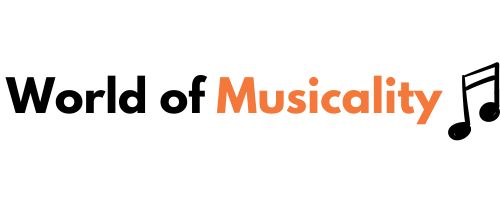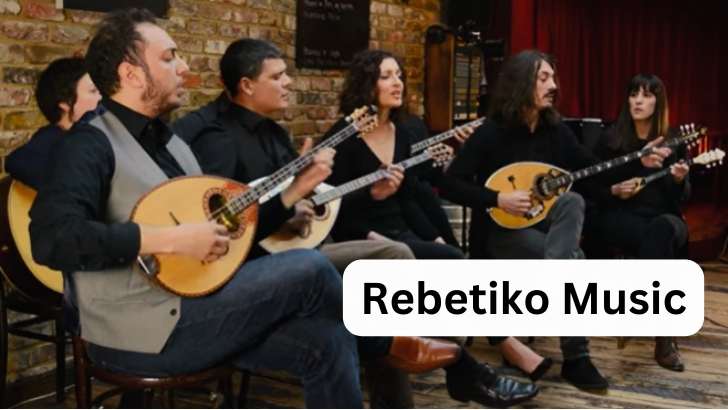
What is Rebetiko Music?
Rebetiko music is often defined as the urban blues of Greece. The music genre is characterized by instruments such as the bouzouki, baglamas, guitar, tzouras, the oud and the accordion. Emerging in the early 20th century, the music genre reflects the trials, tribulations, and joys of the Greek urban underclass.
What Musical Instruments are Used in Rebetiko?
The following instruments all play a unique role in the rich, emotive, and distinctive sound of Rebetiko music.
| Instrument | Description |
|---|---|
| Bouzouki | A stringed instrument, central to Rebetiko, known for its sharp and expressive sound, often leading the melody. |
| Baglamas | A small stringed instrument, similar to a bouzouki but with a higher pitch, used for rhythm and harmony. |
| Tzouras | A medium-sized stringed instrument, bridging the sound between a bouzouki and a baglamas, adding depth to the music’s texture. |
| Guitar | Used for rhythm and occasionally for melody, providing a harmonic foundation for the ensemble. |
| Oud | A pear-shaped stringed instrument, providing rich, deep, and nuanced melodies and harmonies, with a sound that predates the bouzouki in Rebetiko. |
| Accordion | Offers a versatile range of sounds, from melancholic to lively, complementing the ensemble with its full chords and melodies. |
Join us as we delve into the heart of Rebetiko, uncovering the main musical instruments behind the music genre that continue to resonate with people across the world.
What Does Rebetiko Music Sound Like?
Characterized by its expressive melodies, political messaging and poignant lyrics, Rebetiko urban music speaks of love, loss, exile, and the harsh realities of life in the margins of Greek society.
The Bouzouki: The Quintessential Rebetiko Instrument
The bouzouki is not just an instrument; it’s the soul of Rebetiko music, embodying the genre’s spirit and cultural depth.
This stringed musical marvel, with its long neck and pear-shaped body, resonates with the sounds of Greece’s urban landscape, telling tales of love, hardship, and resilience.
The journey of the bouzouki through history is as compelling as the melodies it produces, mirroring the evolution of Rebetiko music from the margins of society to a cherished national treasure.
Origins and Development
The bouzouki’s origins are somewhat clouded, with influences traced back to ancient Greece, Byzantine times, and the influx of Greek refugees from Asia Minor in the early 20th century.
Initially viewed with suspicion by the upper classes, it found its home within the Rebetiko genre, a music form emerging in the hash dens and taverns of Piraeus and Thessaloniki.
The instrument underwent significant transformations, evolving from a three-string (trichordo) to a four-string (tetrachordo) version in the mid-20th century, broadening its musical range and expressive capabilities.
The Role in Rebetiko
Central to Rebetiko music, the bouzouki sets the melody and emotional tone, driving the rhythm and engaging listeners with its dynamic range.
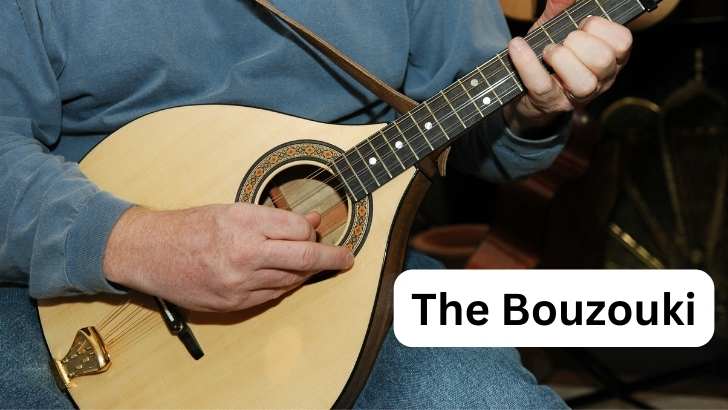
Its distinctive sound, capable of both fiery vigor and tender melancholy, perfectly complements the genre’s lyrical themes of love, loss, exile, and social injustice.
The bouzouki player, often the lead singer as well, uses the instrument to bridge the narrative and musical elements of Rebetiko, creating an immersive storytelling experience.
Musical Techniques and Styles
Playing the bouzouki requires a blend of technical skill and emotional expression.
Musicians employ a variety of techniques, including rapid fingerpicking and intricate melodic improvisations known as “taximia,” which showcase the instrument’s versatility and the player’s virtuosity.
The bouzouki’s music is characterized by its modal system, known as “dromoi,” which provides a rich palette of emotional and tonal expressions, allowing for a deep connection with the audience.
Cultural Significance
The bouzouki’s rise to prominence within Rebetiko music reflects broader cultural shifts in Greece, from the marginalization of its early practitioners to the genre’s acceptance and celebration as a cornerstone of national identity.
The instrument symbolizes resilience in the face of adversity, a testament to the enduring spirit of the Greek people.
Today, the bouzouki continues to be a vital part of Greece’s musical heritage, inspiring new generations of musicians and captivating audiences worldwide.
The Baglamas: A Companion in Melancholy
The baglamas is much more than a musical instrument in the Rebetiko ensemble; it is the soul’s whisper, complementing the bouzouki’s bold voice with its delicate, mournful timbre.
This small, yet powerful instrument plays a pivotal role in the Rebetiko genre, adding depth and nuance to its sound palette. In this section, we delve into the origins, significance, and musicality of the baglamas, exploring its unique contribution to the Rebetiko tradition.
Origins and Characteristics
The baglamas is a small stringed instrument, resembling a miniature bouzouki, with a long neck and a rounded body.
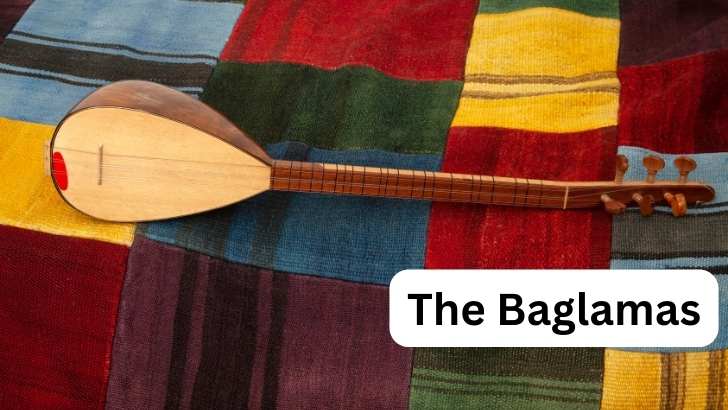
Its origins are closely tied to the Rebetiko music tradition of the early 20th century, serving as a portable companion for musicians on the move.
Despite its modest size, the baglamas produces a sound that is poignant and resonant, capable of evoking deep emotional responses.
Musical Role in Rebetiko
In the ensemble, the baglamas typically plays a supporting role, harmonizing with the lead instruments and enriching the musical texture.
Its higher pitch contrasts beautifully with the lower tones of the bouzouki, creating a balanced and cohesive sound.
The baglamas often doubles the melody or provides rhythmic accompaniment, its light, plucky sound adding layers of complexity to the music.
Playing Techniques and Styles
The playing technique for the baglamas involves a combination of strumming and plucking, with players often using a plectrum to produce a clear, crisp sound.
The instrument’s small size allows for rapid, intricate finger movements, enabling musicians to execute complex melodic lines and embellishments.
The baglamas is particularly effective for playing taximia (improvisations), where its expressive capabilities come to the forefront.
Cultural Significance
The baglamas holds a special place in the heart of Rebetiko music, symbolizing the genre’s grassroots origins and its intimate connection with the struggles and joys of everyday life.
The instrument’s accessibility and portability made it a favorite among street musicians and travelers, embodying the spirit of freedom and resilience that characterizes Rebetiko.
Other Key Instruments in Rebetiko
Rebetiko music is characterized by its rich ensemble of instruments, each contributing its unique sound and texture to the genre. Beyond the bouzouki and baglamas, several other instruments play pivotal roles in creating the distinctive sound of Rebetiko. This section explores these instruments, delving into their origins, musical roles, and significance within the Rebetiko tradition.
The Guitar
The guitar, a versatile instrument globally, holds a special place in Rebetiko music. It typically provides rhythmic and harmonic support, with its chords and strumming patterns laying the foundation for melodies played by the bouzouki and baglamas.
The guitar’s adaptability allows it to blend seamlessly with the traditional sounds of Rebetiko, enhancing the music’s emotional depth and complexity.
The Tzouras
The tzouras is a smaller cousin of the bouzouki, with a shorter neck and a smaller body, producing a sound that is brighter yet retains the bouzouki’s distinctive timbre. It often accompanies the bouzouki, adding texture and richness to the music.
The tzouras’ size and sound make it particularly suited for intimate performances, where its voice can shine alongside other traditional instruments.
The Oud
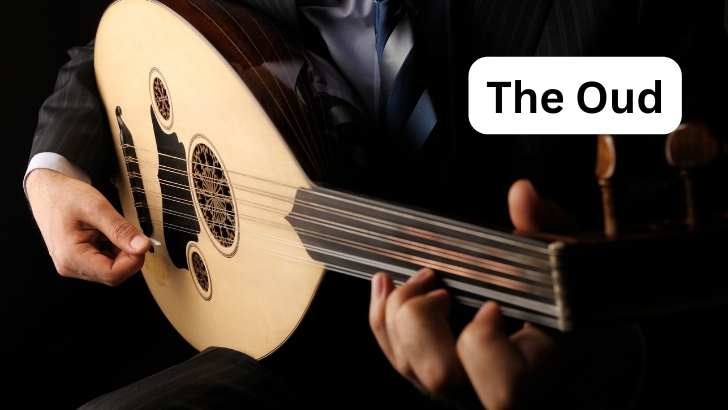
The oud, with its deep, resonant sound, is a pear-shaped stringed instrument that predates the bouzouki and has been influential in the development of Greek music, including Rebetiko.
Its gentle, lute-like tones offer a contrast to the sharper sounds of the bouzouki and baglamas, providing depth and a hint of the Middle Eastern influence that pervades much of Greek music.
The Accordion
Although not traditionally associated with early Rebetiko, the accordion found its way into the genre as it evolved. Its rich, expressive sound adds a new dimension to Rebetiko music, capable of both melody and accompaniment. The accordion’s versatility and full-bodied chords contribute to the genre’s dynamic range, from the most upbeat rhythms to the most heart-wrenching ballads.
The Backbone of Rebetiko Music
Together, these instruments form the backbone of Rebetiko music, each adding its voice to the genre’s rich tapestry. From the rhythmic strumming of the guitar to the melodious lines of the tzouras, the deep resonance of the oud, and the accordion’s vibrant chords, they create a sound that is unmistakably Rebetiko.
Conclusion: The Heartbeat of Rebetiko
Rebetiko music, with its rich tapestry of sounds and stories, offers a window into the soul of Greece.
Through the strum of the bouzouki, the pluck of the baglamas, and the melody of other key instruments like the guitar, tzouras, and oud, we are transported to a world where music speaks directly to the human condition.
These instruments, integral to the Rebetiko genre, are not just tools of musical expression but vessels of cultural identity and emotional depth.
